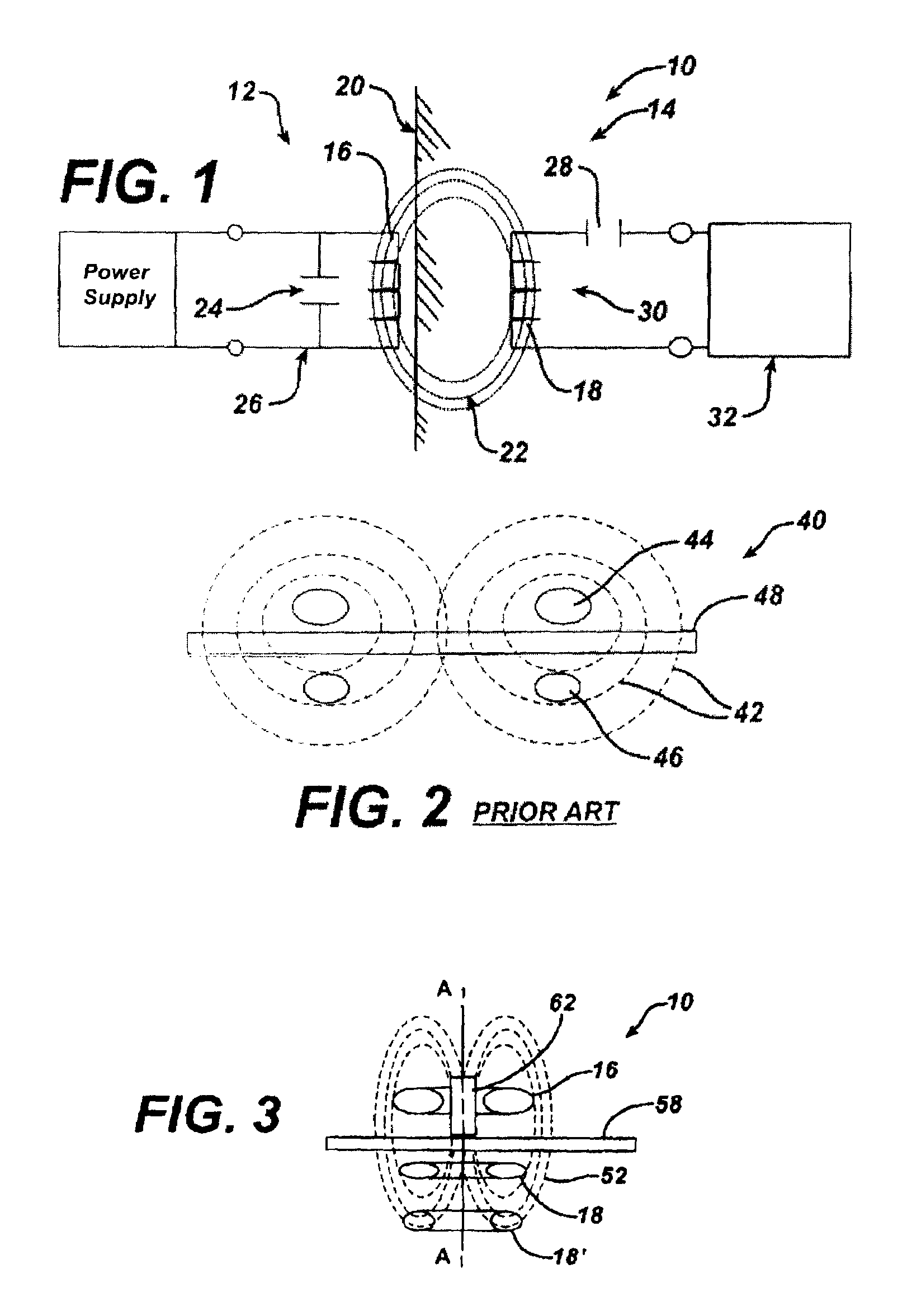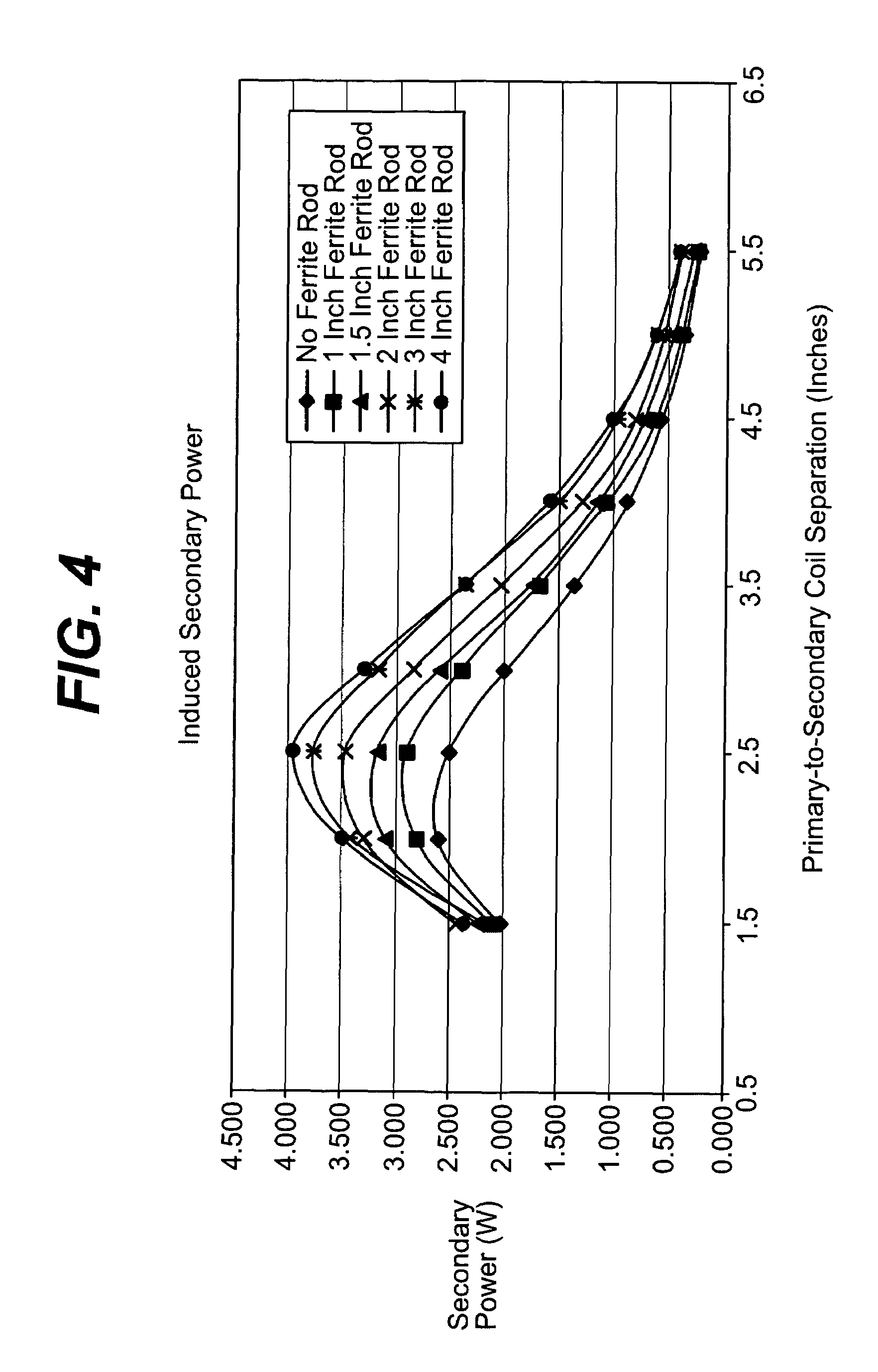Transcutaneous energy transfer primary coil with a high aspect ferrite core
a technology of ferrite core and primary coil, which is applied in the direction of coils, electrical equipment, therapy, etc., can solve the problems of affecting the output power supplied to the implanted device, device performance erratically or not functioning at all, and inability to function at all, so as to achieve greater power coupling efficiency
- Summary
- Abstract
- Description
- Claims
- Application Information
AI Technical Summary
Benefits of technology
Problems solved by technology
Method used
Image
Examples
Embodiment Construction
[0028]Referring now to the drawings in detail, wherein like numerals indicate the same elements throughout the views, FIG. 1 depicts the relationship between a transcutaneous energy transfer (TET) system 10 that has an external device 12 and an implanted device 14. The external device 12 includes a primary coil 16 that is external to a patient. The implanted device 14 includes a secondary coil 18 that inductively receives power from the primary coil 16 transcutaneously through a dermal layer 20 of the patient, as depicted by alternating current (AC) magnetic flux lines 22. The primary coil 16 is connected in parallel with capacitance 24 to form a resonant parallel tank circuit 26. The AC magnetic flux 22 generated by the resonant tank circuit 26 is collected by secondary coil 18, which is connected in series with a secondary capacitance 28 to form a secondary resonant series tuned tank circuit 30, which delivers power to implant circuitry 32.
[0029]As an example of an implanted devic...
PUM
 Login to View More
Login to View More Abstract
Description
Claims
Application Information
 Login to View More
Login to View More - R&D
- Intellectual Property
- Life Sciences
- Materials
- Tech Scout
- Unparalleled Data Quality
- Higher Quality Content
- 60% Fewer Hallucinations
Browse by: Latest US Patents, China's latest patents, Technical Efficacy Thesaurus, Application Domain, Technology Topic, Popular Technical Reports.
© 2025 PatSnap. All rights reserved.Legal|Privacy policy|Modern Slavery Act Transparency Statement|Sitemap|About US| Contact US: help@patsnap.com



